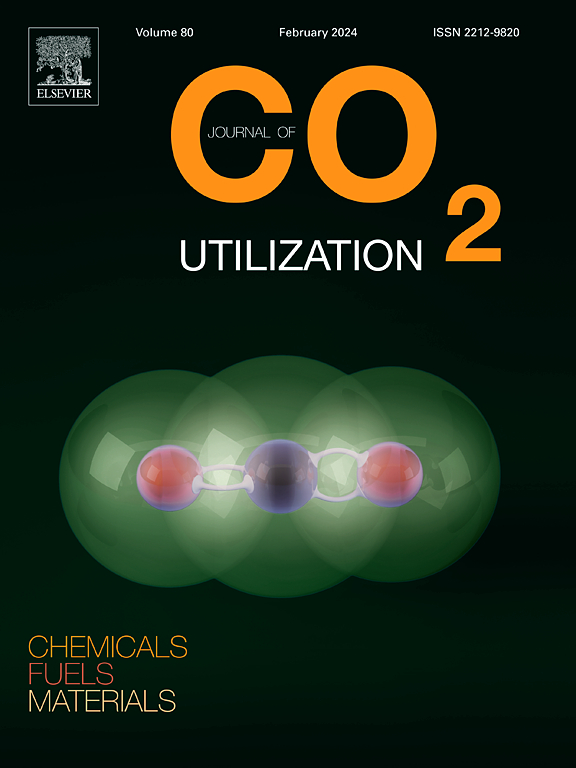表面处理二氧化硅纳米流体对超临界CO2注入效率的影响:在深层盐水含水层中的应用
IF 7.2
2区 工程技术
Q1 CHEMISTRY, MULTIDISCIPLINARY
引用次数: 0
摘要
深盐水含水层被认为非常适合地质封存碳,因为它们的储存能力比其他储存层(如枯竭的天然气或油藏和煤层)要大得多。使用添加剂,包括表面活性剂和纳米流体,被认为是一种很有前途的方法,可以缓解在向深层盐水含水层注入二氧化碳时,多孔介质中不混相流体之间的毛细管力导致的注入和储存效率降低。本研究分析了含有表面处理过的二氧化硅纳米颗粒的纳米流体中二氧化碳的界面张力和润湿性(接触角)特性。利用微观模型和孔隙网络模型,通过实验和数值方法对注入特性进行了评价。结果表明,纳米流体能有效降低界面张力,提高润湿性。在低超临界CO2注入速度条件下,随着纳米流体浓度从0 wt%增加到1 wt%,注入效率增加,高浓度时略有上升趋势。通过孔隙网络建模进行的敏感性分析表明,界面张力对注入效率的影响比对润湿性的影响更为显著。此外,数值模型中观察到的注射效率提高与微观模型实验中观察到的趋势密切相关。研究结果表明,采用表面处理的SiO2纳米流体可以显著提高地质固碳的注入效率。本文章由计算机程序翻译,如有差异,请以英文原文为准。
Effect of surface-treated silica nanofluid on supercritical CO2 injection efficiency: Application to deep saline aquifers
Deep saline aquifers are well-established as highly suitable for geological carbon sequestration because of their significantly greater storage capacity than other storage layers, such as depleted gas or oil reservoirs and coal seams. The use of additives, including surfactants and nanofluids, has been identified as a promising approach to mitigate the reduction in injection and storage efficiency caused by capillary forces between immiscible fluids in porous media during carbon dioxide injection into deep saline aquifers. This study analyzed the interfacial tension and wettability (contact angle) characteristics of carbon dioxide in the presence of nanofluids containing surface-treated SiO2-based nanoparticles. The injection characteristics were also evaluated through experimental and numerical methods using micromodels and pore network modeling. The results indicate that nanofluids effectively reduce interfacial tension and enhance wettability. Injection efficiency increased as the nanofluid concentration increased from 0 wt% to 1 wt% under low supercritical CO2 injection velocity conditions, with a slight upward trend observed at higher concentrations. Sensitivity analysis conducted via pore network modeling revealed that the injection efficiency was more significantly influenced by interfacial tension than by wettability. Furthermore, the injection efficiency improvements observed in the numerical models were closely aligned with the trends observed in the micromodel experiments. These results demonstrate that the surface-treated SiO2 based nanofluids used in this study can significantly enhance the injection efficiency of geological carbon sequestration.
求助全文
通过发布文献求助,成功后即可免费获取论文全文。
去求助
来源期刊

Journal of CO2 Utilization
CHEMISTRY, MULTIDISCIPLINARY-ENGINEERING, CHEMICAL
CiteScore
13.90
自引率
10.40%
发文量
406
审稿时长
2.8 months
期刊介绍:
The Journal of CO2 Utilization offers a single, multi-disciplinary, scholarly platform for the exchange of novel research in the field of CO2 re-use for scientists and engineers in chemicals, fuels and materials.
The emphasis is on the dissemination of leading-edge research from basic science to the development of new processes, technologies and applications.
The Journal of CO2 Utilization publishes original peer-reviewed research papers, reviews, and short communications, including experimental and theoretical work, and analytical models and simulations.
 求助内容:
求助内容: 应助结果提醒方式:
应助结果提醒方式:


